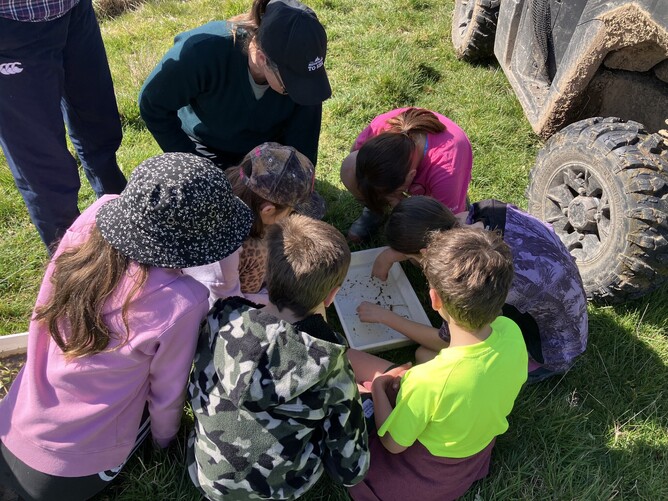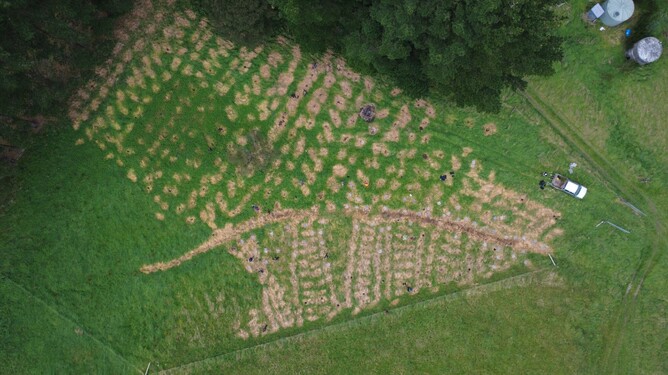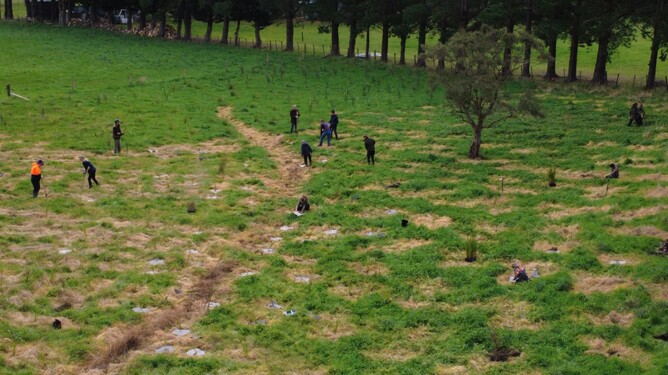This winter, Wairarapa’s catchment groups planted more than 7,000 native plants across the region - a huge effort that will leave a lasting legacy for our land, waterways, and communities.
Community Action
From the hills of Rangitūmau to the wetlands of Ahiaruhe, planting days brought people together - farmers and neighbours, conservation students, school kids, sports teams, and families.
At Ahiaruhe Eco Area, 500 natives were planted along QEII wetland margins by volunteers including Pūkaha/UCOL conservation students and South Wairarapa veterinary staff, with support from QEII National Trust, Ruamāhanga Restoration Trust, and Greater Wellington.
Alongside the Wakamoekau Catchment Group, St Matthew’s Collegiate School’s hockey team planted 1,784 trees as a fundraising initiative, while Ōpaki School pupils helped plant 130 natives along Te Mara stream with the Upper Waipoua Kaitiaki Group and Mountains to Sea Wellington.
At Waimimi Bridge, the Tīnui-Whareama Catchment Group combined a 300-plants effort to enhance īnanga habitat, with a showcase of local projects, including īnanga spawning investigations by Whareama School students - showing how planting links to wider catchment health.
The season’s biggest single contribution came from Pāpāwai-Mangarara Catchment Group, who planted an ambitious 3,000 natives.
Wairarapa Catchment Collective Partnership Lead John Hart attended many of the events and was impressed by the community efforts.
“It’s a busy time of the year for farmers so to have such good turnouts at these planting events was great to see,” he said.
Environmental and Social Benefits
Every plant in the ground helps achieve catchment action plan goals - improving water quality, restoring wetlands, and supporting biodiversity. Riparian plantings shade waterways, stabilise banks and reduce sediment. Habitat corridors give native wildlife space to move and thrive across the landscape.
These events also strengthen community resilience. The Parkvale Catchment Group noted the value of connection alongside the planting. In Whangaehu-Bideford, landowners gained river access for the first time after willow removal and planting of 200 natives. Across the region, BBQs, cups of tea, and shared kai kept spirits high on those wet winter days - reminding us that restoration is as much about people as it is about plants.
Partnership Support
These plantings were made possible by the efforts of volunteers, landowners and the support of local organisations. Greater Wellington funded thousands of plants across several catchments and traps for Rangitūmau Catchment Group’s restoration project. Wainuioru School and Community Nursery donated seedlings, while the Wairarapa Catchment Collective supported kai for planting days - making sure everyone could celebrate together.
Looking Ahead
As these 7,000 plants grow, they represent real progress toward healthier waterways, richer biodiversity, and stronger communities. This winter’s planting shows how community-led restoration, backed by strong partnerships, can deliver meaningful results for both the environment and communities.
The next generation: Jim Campbell from the Upper Waipoua Kaitiaki Group planting with Ōpaki School students along the Te Mara Stream.
Connecting with the awa: Ōpaki School students meet stream inhabitants with Rachel Griffiths, Mountains to Sea Wellington, Catchment Coordinator - Wairarapa
The Parkvale Catchment Group crew enjoying a well deserved cuppa at their wet planting day.
Birds eye view of Parkvale's impressive planting site preperation




